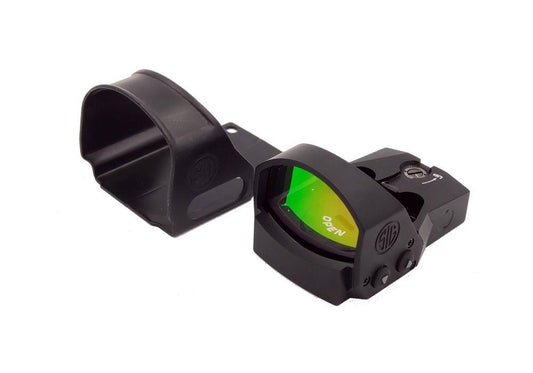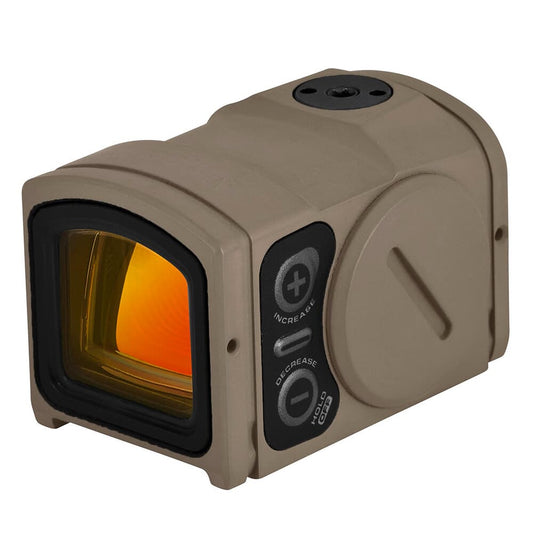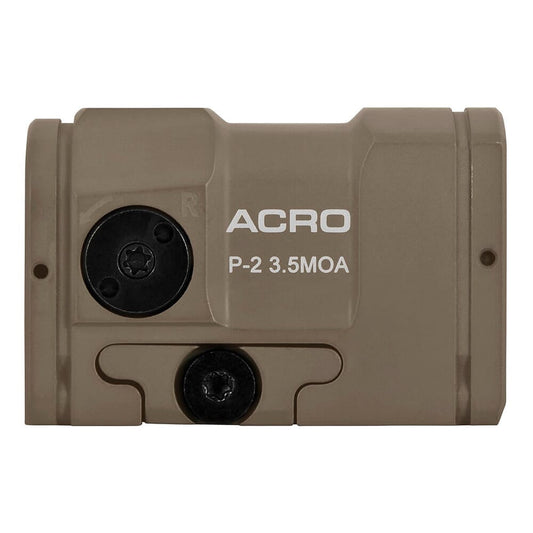

Sig Sauer Romeo1PRO Open-Reflex Red Dot Sight offers advanced performance in a compact, durable design. With an aircraft-grade aluminum housing, this sight withstands harsh conditions, allowing you to focus on precision without the worry of wear and tear. Featuring a point-source emitter, it delivers exceptional brightness across 12 settings, ensuring optimal visibility in any lighting condition, whether day or night.
Rapid target acquisition is made possible with its molded glass aspheric lens, which provides zero distortion and superior light transmittance. The included ruggedized steel shroud enhances durability, making it ideal for shooters who require reliability. Compatibility with various P320 models ensures a versatile shooting experience, making the Romeo1PRO an essential addition to your gear.
Features:
- ENHANCED BRIGHTNESS for optimal visibility in all lighting conditions, ensuring you never miss a shot.
- STURDY CONSTRUCTION with aircraft-grade aluminum housing for unrivaled durability and reliability.
- ADVANCED LENS TECHNOLOGY featuring high-performance coatings for superior light transmittance.
- MOTAC SYSTEM that powers on with motion and off when stationary, conserving battery life.
- TRUHOLD ZEROING system designed to maintain zero shot after shot, even under heavy recoil.
- WATERPROOF AND FOGPROOF performance (IPX-7 rated) ensures functionality in adverse weather conditions.
- 12 BRIGHTNESS SETTINGS for customizable lighting, accommodating any shooting environment.
- RUGGEDIZED PROTECTIVE SHROUD included, adding an extra layer of protection for extreme durability.
Technical Specifications Table
| Specification | Details |
|---|---|
| Magnification | 1x |
| Lens Diameter | 30mm |
| Dot Size | 6 MOA |
| Dimensions | 2.5" x 1.6" x 1.2" |
| Weight | 6.5 oz |
| Material | Aircraft-grade aluminum |
What’s in the Box?
- Sig Sauer ROMEO1PRO Red Dot Sight
- Ruggedized protective steel shroud
- Battery (CR1632)
- User manual
Customer Reviews
"Absolutely love the ROMEO1PRO! The clarity is astonishing, and I can quickly adjust the brightness no matter the time of day." - Alex M.
"This sight is a game changer. It holds zero perfectly, even after a long day at the range." - Jamie R.
FAQ
How does the ROMEO1PRO perform in low-light conditions?
This sight features a point-source emitter with 12 brightness settings, ensuring excellent visibility even in challenging lighting situations, making it ideal for both day and night use.
Is the ROMEO1PRO easy to install?
Yes, the sight is designed for user-friendly installation on various compatible models, including M17, M18, and P320 series. Just follow the included instructions for a seamless setup.
Similar Models
Looking for the perfect red dot sight? Discover our extensive range of Sig Sauer optics, including the SIG Sauer ROMEO5 for enhanced battery life and the SIG Sauer ROMEO4 for even greater versatility. Explore our full collection for exceptional optics tailored to your shooting needs.
You May Also Like
Here’s some of our most similar products people are buying. Click to discover trending style.








